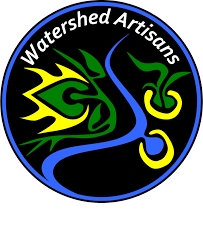May 31, 2022
This summary hopefully provides you a sense of Piñon-Juniper Woodland (PJW), which opened in June 2021, and the now completed two phase arroyo shelf restoration and conservation. This work can be best viewed from the western edge of the parking lot, looking east to west across the arroyo.
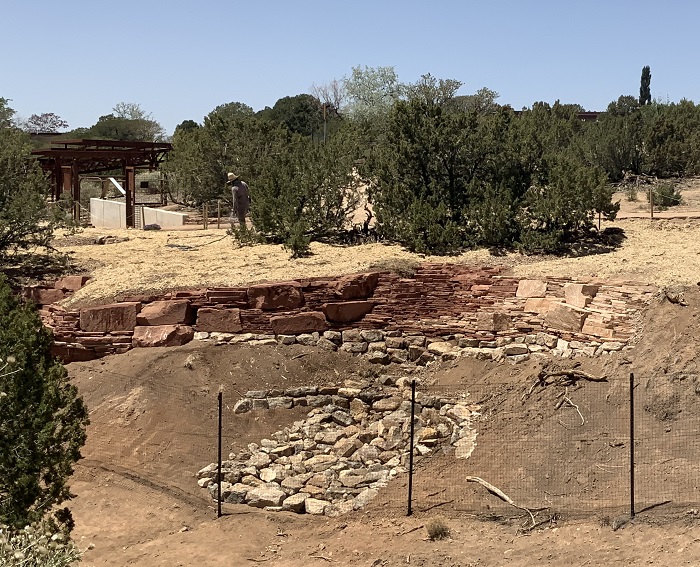
The Garden is fortunate to have partnered with Craig Sponholtz and Watershed Artisans, Inc. (WAI). Craig is a stream/wetland restoration designer, educator, and artist. The Watershed website has extensive details of work WAI has performed across North America to as a far away as the Great Barrier reef region of Queensland Australia. The common threads or project objectives include healing watersheds and rebuilding soils to create regenerative, productive and fertile agro and natural ecosystems.
The Garden site on Museum Hill straddles the Arroyo de los Pinos (Arroyo), where several still visible and functioning gabions were installed the past 90 years, including a major installation by the Civilian Conservation Corps in the 1930’s.
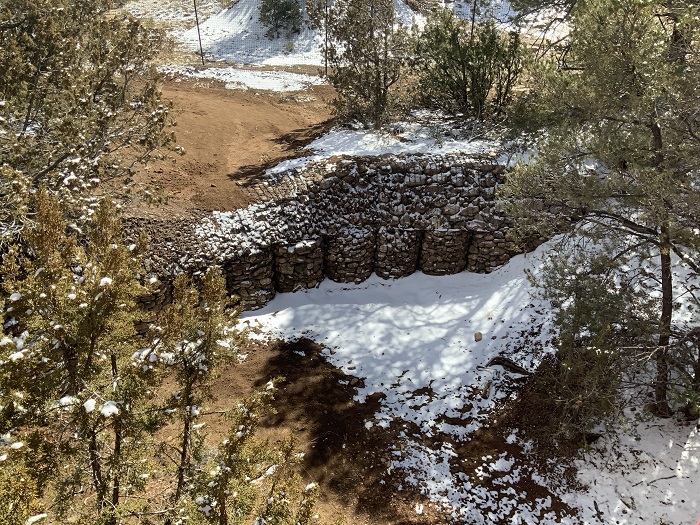
Each was designed to stabilize the arroyo and reduce the erosive effects of water rushing towards and downstream of the arroyo. Since 2012, the Garden has stabilized various areas of eroding arroyo shelves and deep head-cuts created by side drainages into the arroyo, which threaten the integrity, beauty and safety of our garden spaces.
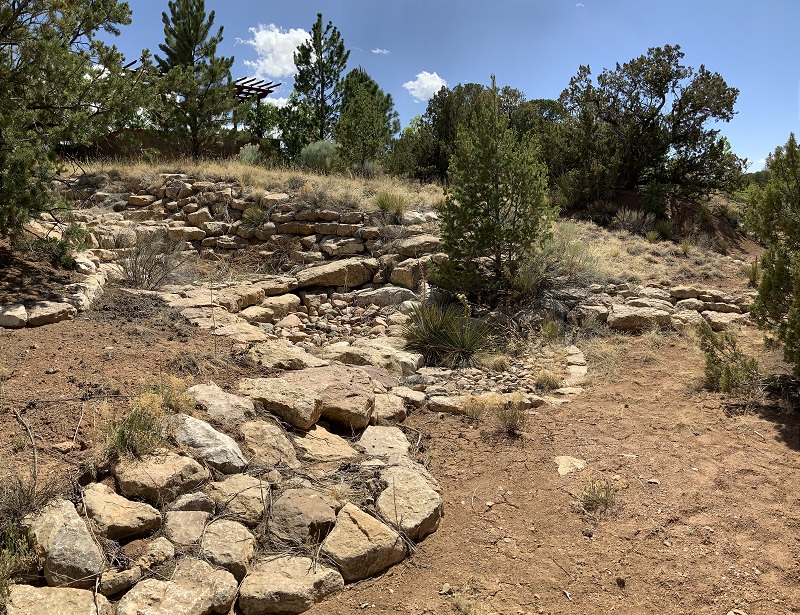
Craig participated in the Garden’s initial development of its Museum Hill site beginning around 2012, called the Orchard Gardens, which publicly opened in July, 2013. The work includes an extensive system of meandering rock swales (named La Rambla) and water capture ponding areas (Zuni bowls). The objective is to slow surface runoff and to stabilize the largest head-cuts. Craig worked with Reese Baker of Santa Fe’s Raincatcher on the design and installation.
The current Piñon-Juniper Woodland Arroyo Restoration had two Phases:
Phase I: completed in Nov. 2021, involves surface water controls from the site’s western high point, from which water runs into a steep eroded gully that terminates in Arroyo de los Pinos. Extensive rock work was installed in the gully itself to stabilize and protect it from further erosion along its steep walls. Native seed was incorporated with the rock installation to help further stabilize soils, and to help soften and naturalize the appearance of the rock work while taking advantage of the additional moisture captured and held by the rock.
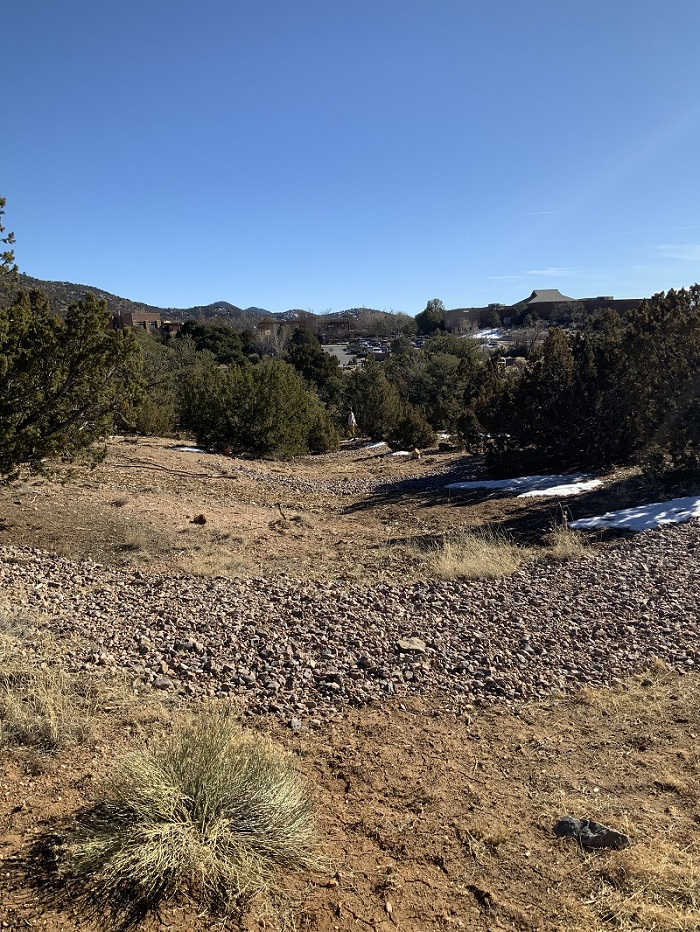
Phase II: commenced in late April, 2022 and unfolded over 4 weeks. 40 pallets, holding ~80 tons of Sedona sandstone, along with a range of large to smaller limestone boulders, were machine and hand placed along the arroyo’s western side. The work had two core purposes:
- a) to reduce erosion, while capturing water on the east facing shelf of the arroyo, and b) to stabilize and minimize the vertical drop offs of the shelf slopes, while creating a simulated sandstone rock outcropping via discontinuous segments or sections.
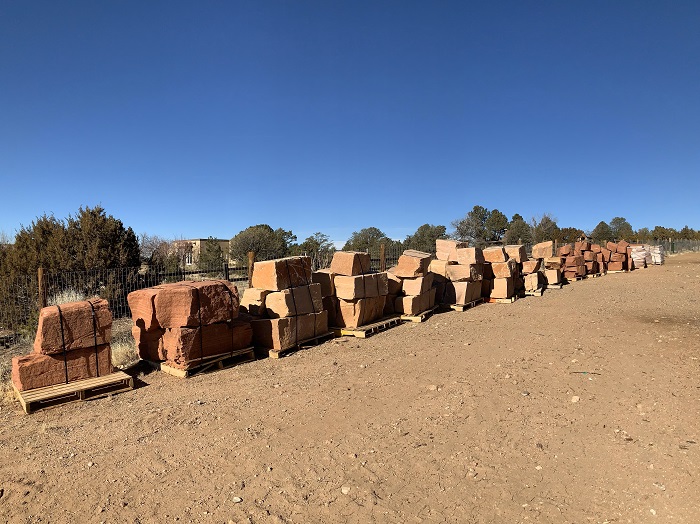
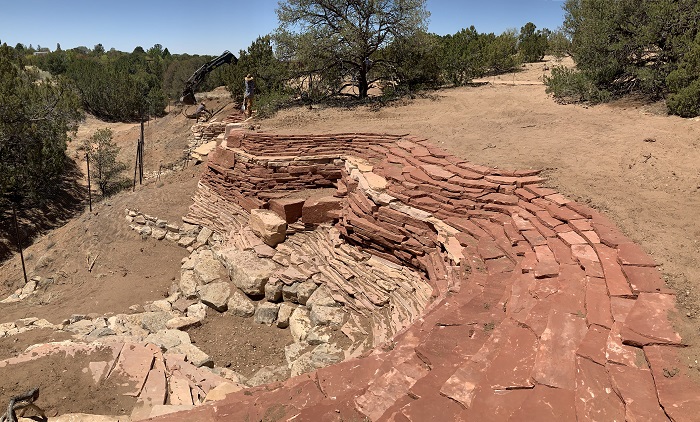
PJW Grass Restoration also Underway:
In spite of careful planning and thoughtful execution, the arroyo restoration was unavoidably destructive of the limited amounts of vegetation located between the ADA pathway and east to the arroyo’s shelf where the rock was installed. This distance is over 150 linear feet.
We were fortunate two members of the Watershed crew, Aaron Kauffman of Santa Fe, and Omar Ore-Giron of Tucson, made an overnight switch from the heavy lifting of large rock installation, to less strenuous, but critical work of grass restoration for over 4,500 sq. ft. of exposed surface.
Aaron’s 10 year old company, Southwest Urban Hydrology, LLC specializes in remediating the impacts of urban growth on ecosystem hydrology, with expertise in rain gardens, bio-retention basins, watershed assessment and soil conservation, to name a few of the company’s services.
Aaron is a frequent lecturer and taught a Watershed Management course at Santa Fe Community College. A sincere love of the land and our threatened resources, combined with a B.S. in Ecological Studies at Seattle University and a M.S. in Watershed Hydrology & Mgmt. from University of Arizona, plus 20 years of experience, position Aaron perfectly for the revegetation process in PJW.
Disturbed soils on the site were amended with compost and then seeded before a thin veneer of clean mulch was added to prolong moisture.
Grasses used in seeding (click on name to learn more in the Garden Explorer plant database):
-
- Indian ricegrass (Eriocoma hymenoides)
- sand dropseed (Sporabils cryptandrus)
- galleta (Hilaria jamesii)
- sand lovegrass (Eragrostis trichodes)
- alkali sacaton (Sporobilis airoides)
- blue grama (Bouteloua gracilis)
Our recent strong winds have disturbed some of the mulch, even after a hand soaking, and now we wait, ever hopeful for monsoon to begin. If a month from now conditions are unchanged, we’ll commence hand watering to ensure the seeds germinate this growing season, adding beauty and beginning the process of rebuilding the depleted PJW soils.
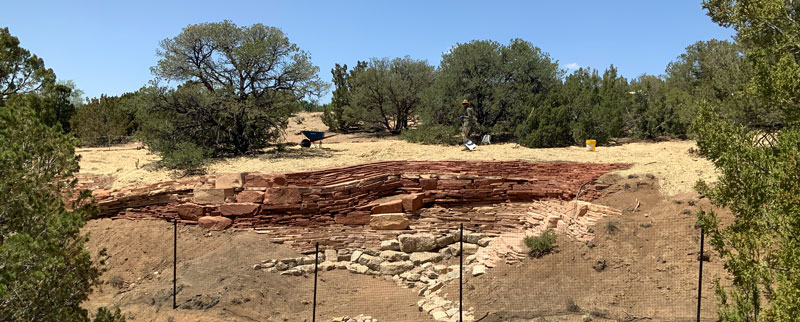
Similar to nearly all aspects of creating and sustaining a botanical garden in Santa Fe, patience, persistence and a “sprinkling” of optimism are essential attributes which we strive to possess every day. Many thanks to Aaron and Omar; fingers crossed for the anticipated result.
As a reminder, the Garden leases 100% of its land upon which all of its privately funded improvements have been added. Since 2006, the Garden has leased ~11 acres of the Arroyo and its shelves from the City, with the property beginning at the Udall Building and ending at Old Pecos Trail to the southwest. Beginning in 2010, in a series of leases and amendments adding acreage, the Garden has leased some 8+ acres, including the PJW’s 3.25 acres, from the Department of Cultural Affairs of the State.
We are pleased to restore and conserve this important section of the Garden, as we continue to create additional demonstrations of techniques to utilize in land conservation, while creating beauty and interest in the process.
We hope you’ll visit the Garden soon and often to learn about the wide range of sustainability projects we promote, including solar, composting, land and water conservation, and the Garden’s selection of water wise and pollinator friendly plantings in its extensive collection.
Thank you Watershed Artisans and Southwest Urban Hydrology!

